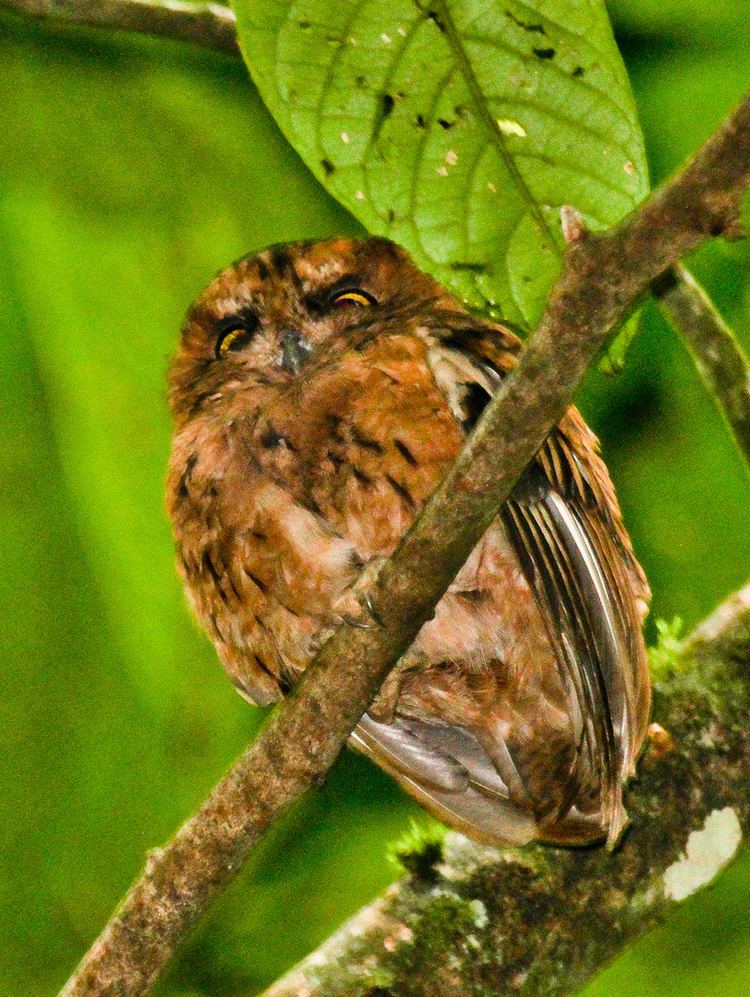Order Strigiformes Genus Otus | Phylum Chordata Family Strigidae Scientific name Otus hartlaubi Rank Species | |
 | ||
Similar Mindanao scops owl, Pemba scops owl, Sandy scops owl, Mindoro scops owl, Moheli scops owl | ||
The São Tomé scops-owl (Otus hartlaubi), alternatively known as petit-duc de Sao Tomé, or autillo de Santo Tomé, is a species of owl in the true owl (a.k.a. Strigidae) family which is one of the two families of owl. Within that family, this owl is in the scops owl (a.k.a. Otus) genus; this is the genus of owls having the largest number of species.
Contents
Description
The São Tomé scops owl is a small, secretive owl with small ear-tufts. It ha s light reddish-brown facial disc with a white chin and white eyebrows. The crown and upperparts are chestnut with rufous wavy markings and black shaft streaks. There scapulars have white spots and black tips. The flight feathers are buff with white mottling and narrow there are buff bars on the tail. The underparts are rufous with fine vermiculations of brown and white and bold black streaking. Juveniles are paler. It is a small owl, about 18 centimetres (7.1 in) long, weighing about 79 grams (0.174 lb).
Voice
The São Tomé scops-owl calls is a high-pitched ‘hu-hu-hu’ also has a low pitched, raucous ‘kwow’.
Distribution and habitat
This owl species is endemic to São Tomé Island, which is part of São Tomé e Príncipe, in the Gulf of Guinea, off the western equatorial coast of Central Africa.
This owl's natural habitats are subtropical or tropical moist lowland forests and subtropical or tropical moist montane forests where it is relatively widespread and the population is probably several hundred birds.
Habits
This species of owl is the only one on the island, except for the common barn owl. Its diet consists of insects, grasshoppers, beetles, moths, and small lizards. This type of owl is nocturnal (like most owls) and is not shy toward humans. It roosts close to tree trunks or within them. Females of the species are somewhat larger than males. The adult face and upper body are mostly brown, with white chin and eyebrows. It sometimes call during the day.
Conservation and status
The continued survival of the São Tomé scops owl depends upon stopping habitat loss in the remaining lowland rainforest of São Tomé, as does the survival of three other birds: the São Tomé ibis, São Tomé olive pigeon, and São Tomé oriole.
